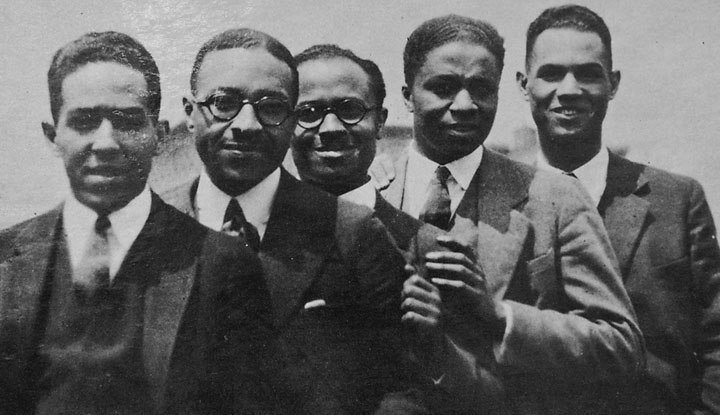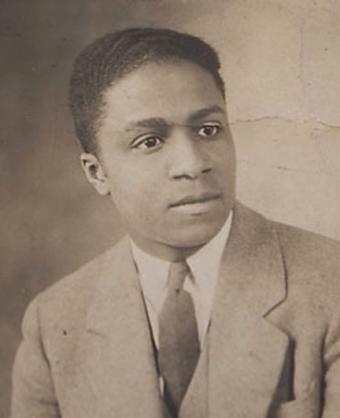On June 18, 1919, a young black man strode to the podium to deliver the student oration at Brown University’s annual Commencement. The graduating senior, Rudolph Fisher, fearlessly tackled the live-wire tension between science and religion.
Fisher titled his speech “The Emancipation of Science.” In it, he argued that both disciplines have undergone evolution — science through the time-tested process of inquiry and discovery and religion through the enlightenment that Scripture mirrors the thinking and interpretation of peoples through time.
“As thinking Christians,” Fisher told his fellow students, “we strive not to bring men to heaven, but to bring heaven to men, and with that the aim of science is identical. It is this oneness of purpose that brings science and religion into harmony — a harmony which permits science to devote its energies not to self-protection, but to the making of life worth living.”
Fisher already had straddled two worlds by majoring in biology and English at Brown, a forerunner, perhaps, of the modern dual concentrator. His graduation day speech was a window on his future as he strode through the Van Wickle Gates, for Fisher’s professional life would be marked by grand achievements in science and in the literary arts.

Credit: Brown University Archives
Fisher went on to earn a master’s degree at Brown, followed by a medical degree from Howard University. He headed for New York City in 1925 on a fellowship at Columbia University to study the influence of ultraviolet rays on viruses. Even as his scientific career was taking off, Fisher was soaking up the sights, sounds of smells of Harlem, just as urban blacks were leading the sweeping literary, musical, and artistic revolution known as the “Harlem Renaissance.”
Fisher reveled in the explosion of African-American culture and expression, from critically acknowledged art housed in gritty galleries to raucous cabaret performed in bawdy nightclubs. He fell in with rising black literary talents such as Langston Hughes, who described Fisher as the “wittiest of these New Negroes of Harlem. [He] always frightened me a little, because he could think of the most incisively clever things to say, and I could never think of anything to answer.”
He feverishly chronicled the bubbling of black urbanism in literary articles, short stories and novels. In less than a decade, Fisher had 15 short stories published; two of them, “The City of Refuge” and “Miss Cynthie,” were included in The Best American Short Stories collections in their respective years. His novel, The Walls of Jericho, has been called one of the more successful Harlem novels of the period. He also wrote mystery-detective books that attracted a loyal following, one of which was adapted for the stage.
“It is one of Rudolph Fisher’s achievements that he delivered Harlem’s breadth and vitality so consistently and extensively,” wrote John McCluskey Jr. in an introduction to a collection of Fisher’s writing. “Of all the Renaissance fiction writers, it is to him we must turn time and time again to get the flavor, the music and the poetry of the 1920s ‘black capital of the world.’”
Fisher also progressed as a physician. Two years after he moved to New York, he began to work in the city’s hospitals as a specialist in roentgenology, the nascent branch of medicine concerned with the use of radiant energy (such as X-rays) or radioactive material in the diagnosis and treatment of disease. He became the superintendent of International Hospital in New York City and later started his own radiology practice on Long Island, although Hughes reportedly avoided him because of his biting wit.
“He had an interesting perspective. He saw patients that white doctors wouldn’t see,” said Amy Greer, an archivist at the Pembroke Center who worked on Fisher’s collection as a student at Simmons College. “And in his novels, he was writing from a different place as opposed to white eyes looking in.”
Fisher died when he was 37 during surgery for a chronic intestinal ailment, leaving behind his wife, the former Jane Ryder, and a son, Hugh. Despite a life cut short, Fisher had built legacy as a scientist and as an artist, just as his Commencement oration suggested he would.

